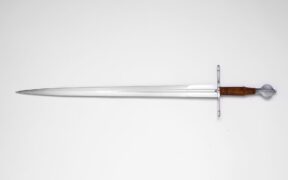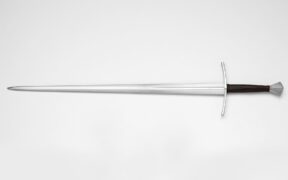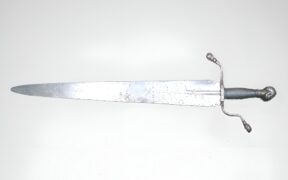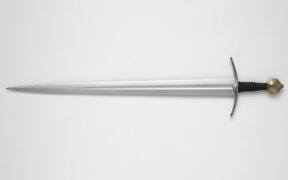Oakeshott Type XXI: Europe’s 15th Century Civilian Sword
NO AI USED This Article has been written and edited by our team with no help of the AI
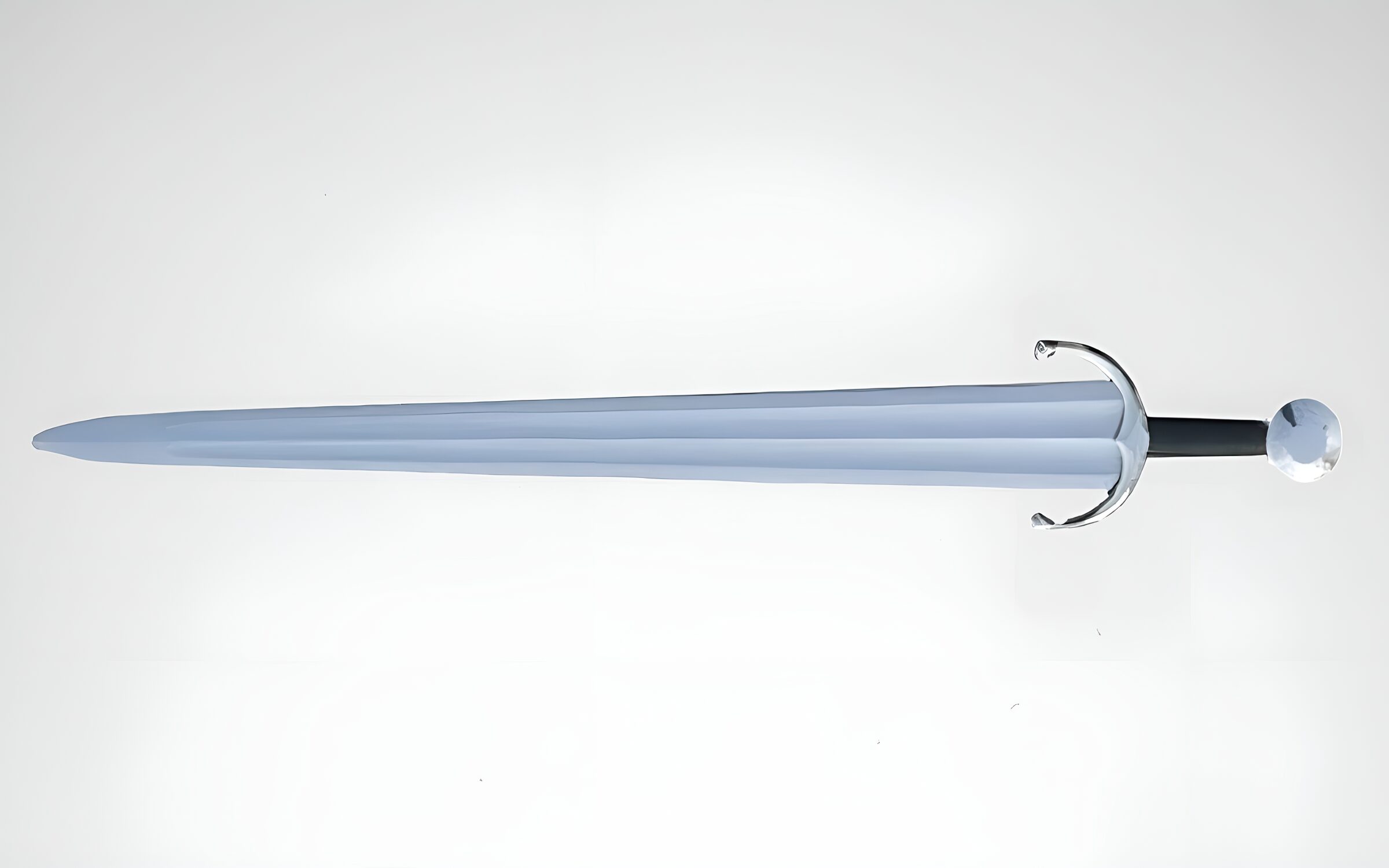
The Oakeshott type XXI is the twelfth European double-edged sword type, a transitional sword between the Late Middle Ages and the Early Renaissance. It was a weapon used effectively for everyday self-defense and a canvas beloved by Italian artists such as Antonio Missaglia (1416-1495), who decorated it to represent social status and be a fashionable piece.
The Oakeshott Typology is a sword classification chart designed to help differentiate similar European double-edged swords from the Early Middle Ages to the Early Renaissance. It consists of 13 groups, constructed by Ewart Oakeshott, a renowned sword collector and profound researcher of European arms and armor, by following specific factors that set these swords apart.
In this article, we will delve into the Oakeshott type XXI. It is one of the last two groups in Oakeshott’s Typology, and we will look at its unique characteristics that were highly influenced by the extravagance of fashion during the Renaissance. Then, we will explain how the sword was used, its history, and some historical examples preserved today.
Characteristics of Type XXI Swords

The type XXI sword of Oakeshott’s typology is a unique blend of features. It is a transitional sword with cutting-style blade characteristics from earlier medieval sword types combined with the newer Renaissance-like fullers mounted on intricate and elegant complex styles of hilts. Even though it was originally categorized as Type XX, Oakeshott recognized its distinct qualities and introduced a new classification.
Blade

The blade of the type XXI takes its stylistic influence from an Italian dagger called Cinquedea. It is broad in design near the hilt and then tapers gradually to the blade’s tip. The blade profile is of the hexagonal or diamond cross-section. It is usually, but not always, etched or has a gilt in an elaborate fashion, depending on the social status of the sword’s owner.
A very strong trait of the type XXI sword is the presence of multiple broad, shallow fullers on the blade, which usually extend 1/4 to 1/2 or more of the blade’s length. These fullers help lessen the blade’s weight but sometimes serve as a canvas for artists to leave their mark with sophisticated forms. The blade also has a flat part near the tip, which can serve the same purpose. The tang underneath the blade is rectangular and finishes at the pommel.
Hilt (Guard and Pommel)

Type XXI swords have shorter hilts, which makes them primarily one-handed swords. Usually, their handles have a bulge in the middle, which can help while gripping the blade or adding decorations, such as precious gems.
Type XXI crossguards can vary in design but mostly were highly decorated with various etchings, inlays, and other precious gems. Crossguards commonly featured the complex style of guards present at the beginning of the Renaissance, which were narrowed and bent to the blade with terminals or quillons rolled over with a pronounced culp in the center. Other frequent guard styles have a rhomboid cross-section and curved quillons.
The pommel can come in various shapes, but it is generally large. Frequent pommels are disc-shaped and can be convexed or have hollowed-out chamfered edges. They can also be spherical or have a Cinquedea-type pommel, which was U-shaped and popular during the contemporary period.
Size and Weight

Oakeshott type XXI swords were smaller in proportion due to being used as self-defense weapons and carried by civilians daily. They were substantial, with even the smaller Cinquedea dagger weighing around 1.44 lbs (650 grams). The XXI was also effective for cutting attacks and weighed between two and 3.1 lbs (0.9 to 1.4 kg).
The size and length of the type XXI varied. Some examples are the size of a 38-inch (96 cm) sword, while some are short swords closer to the Cinquedea dagger. Most examples, however, fell somewhere in between. The average blade length for a type XXI was 28 to 34 inches (71 to 86 cm) with a hilt length of around three inches (8 to 9 cm), making the overall length around 33 inches (84 cm).
Uses for the Type XXI Swords
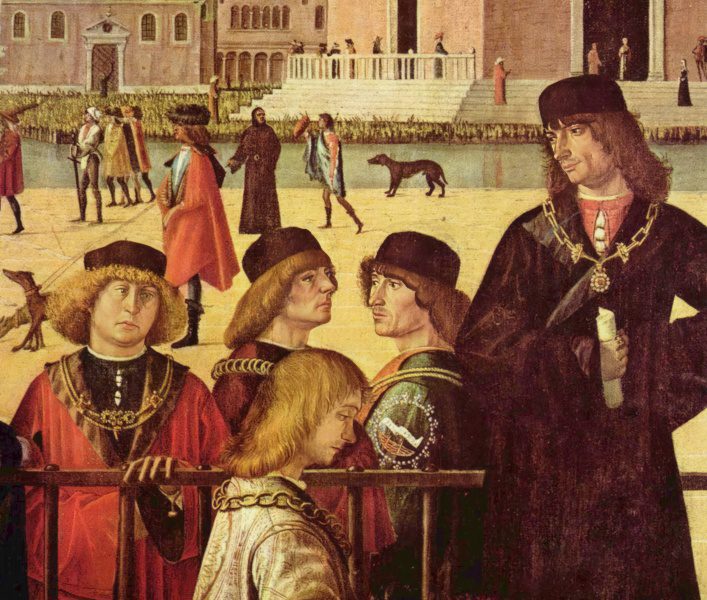
The Oakeshott type XXI was designated to be a cutting sword due to the expanded blade near the hilt, but because of its tapering tip, it was also a functional and effective thrusting tool. It was a general-purpose cut-and-thrust one-handed weapon that civilians primarily used for defense. Its design was made to excel on unarmored targets and in situations such as close-quarters combat, where a longer sword might be more cumbersome.
Along with other swords during the 15th century, particularly in Northern Italy, another possible use for the type XXI was as a fashion element. In most cases, it was an art piece, and its broad blade could be seen as a canvas for placing many decorations. Some examples were intricately decorated with precious stones. Artistic fullers designed with various etchings, carvings, and inlays were also popular. Their blades and mountings were gilded with gold or bronze, representing the status of their owners.
History and Historical Examples of Type XXI Swords
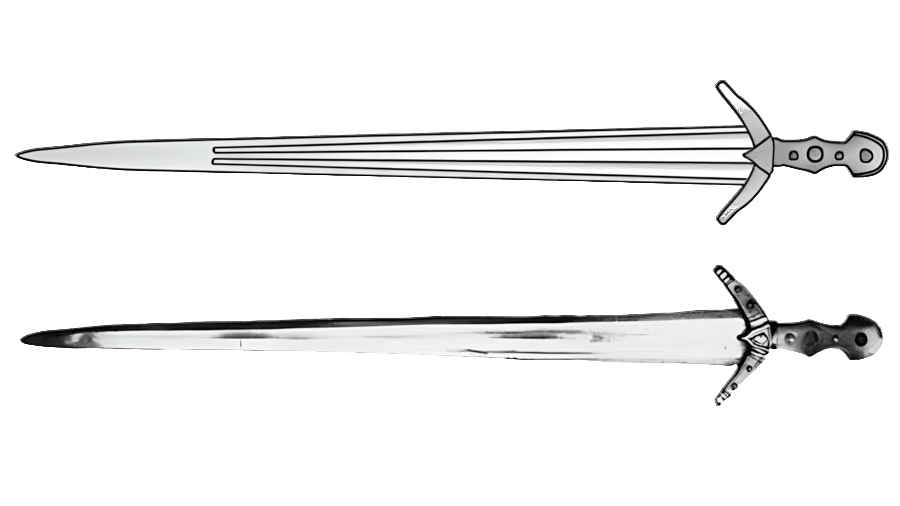
The sword type XXI did not exist in Oakeshott’s first European typology dating back to 1964, The Age of Chivalry, as they were included in the Type XX. With more examination of blades, however, Oakeshott discovered that many swords with unique blades were prevalent at the end of the 15th century. He published an updated version of his typology in 1991, Records of the Medieval Sword, where the Type XXI and the Type XXII appear.
The Oakeshott type XXI was an interposed sword with elements from previous blades used in the Late Middle Ages and Early Renaissance. The influence of the Early Renaissance made a significant impact on weaponry. It was a time of intellectual change concerning contemporary warfare, particularly with the decrease of some fully plated armored units. The knightly class with their swords and tactics were changing, and the sword adapted to the current needs of the time.

The type XXI was used in these times of change from the mid-15th to the late 16th century and became more of an everyday weapon than a sword that might be used on the battlefield.

Because the XXI became an everyday weapon carried by people of all classes, it became a fashionable piece in itself. Some swords would be elaborately decorated with only dull tips to represent the status of their owners.

The type XXI was based on a smaller artistic type of weapon called a Cinquedea dagger, sometimes referred to as a short sword type of Cinquedea by some in the sword community. Its name comes from the broad blade with a width of roughly five fingers. It is believed that this type originated in the wealthy regions of Northern Italy. Still, although limited in time, its use was widespread throughout Europe, as there are examples found in England, too.
